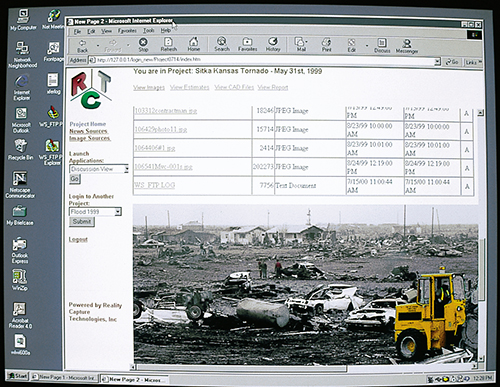
Visualizing Progress
Industries, large and small, needing shared, visual and spatial information, can benefit from technologies developed by NASA and other government agencies. Reality Capture Technologies (RCT), Inc., of San Jose, California, is a spinoff company of the NASA Ames Research Center. RCT offers e-business solutions for optimizing management, design, and production processes through visual collaboration environments (VCEs).
NASA used a predecessor of RCT's VCEs to prepare for the Mars Pathfinder mission and to observe data transmissions from the Mars Sojourner Rover. In 1989, RCT founders worked with the Pioneer Project, which was formed to contain radiation from the failed Chernobyl reactor. VCEs were used to develop a robot that carried instruments for visually imaging the reactor's interior. The Department of Energy (DOE) and NASA helped fund a $2.7 million project to visually assess the damaged interior of the reactor. The Ukranian operators could remotely control the robot to create a virtual, three-dimensional, photo-realistic model of the site. The accurate three-dimensional model could then be used to determine the volume of radioactive spillage, map radiation levels throughout the various rooms, and prepare for the planned deconstruction of the facility by measuring entranceways for equipment passage. This successful visualization solution was spunoff into RCT's commercial products.
RCT's products and services use telepresence technology that includes visual data capture, visualization, and real-time collaboration that allows multiple users to effectively manage and share data. The VCE intelligently updates, integrates, and compares a projects current data with previous project designs, allowing project participants to work from a shared 4-D Reality Framework,™ a database for time-space (4-D) constructability simulation and process optimization. The VCE product tightly integrates all of the project information with ongoing project management, plant modeling, facilities management, and resource-planning systems.
A major potential application for the VCE is in the insurance industry. In the case of natural disasters, insurance companies could make better decisions with virtually instant data available for review, allowing them to make decisions quickly on liability and responsibilities, speeding up reconstruction processes significantly. The technology's capability of sharing and working on the same data from multiple field sites and offices is key to its appeal. Customers can also customize their VCEs, making the products industry-specific.
4-D Reality Framework™ is a trademark of Reality Capture Technologies, Inc.

Insurance companies could make better decisions with virtually instant data available for review from disaster sites.














